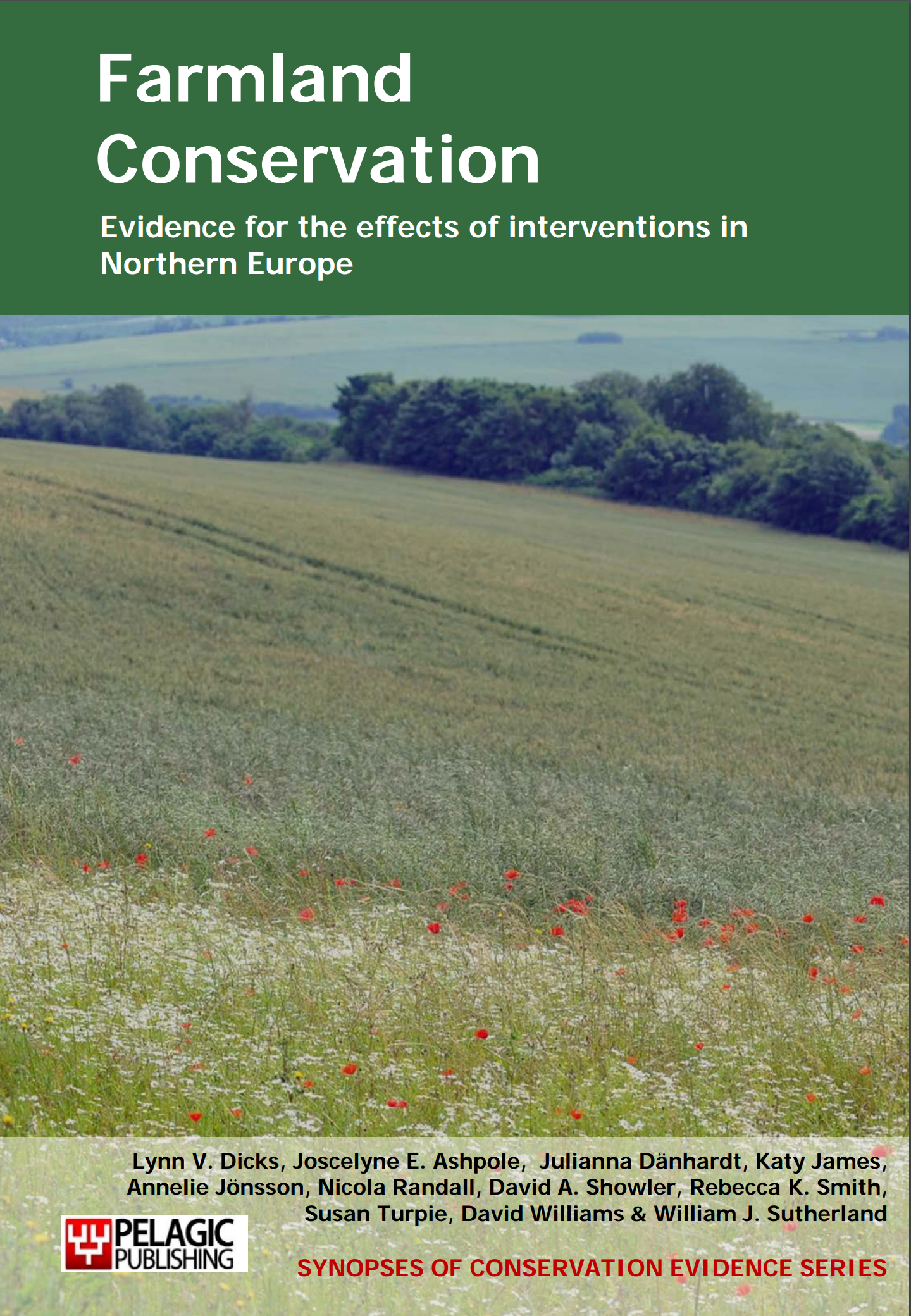Sow rare or declining arable weeds
-
Overall effectiveness category Unknown effectiveness (limited evidence)
-
Number of studies: 2
View assessment score
Hide assessment score
How is the evidence assessed?
-
Effectiveness
40% -
Certainty
15% -
Harms
not assessed
Study locations
Supporting evidence from individual studies
A replicated, controlled, randomized study in 1993 and 1994 of set-aside at a site in England (Neve et al. 1996) found that the establishment of common corncockle Agrostemma githago and interrupted brome Bromus interruptus depended on cover crop, cultivation, management and year. Common corncockle density was significantly higher on the two sown grass covers consisting of 95% or 67% grass (125-135 common corncockle plants/m²) than on naturally regenerated plots (120/m²) or wheat crops (105/m²). The reverse was true in year two (natural regeneration: 600/m², crop: 1100/m², grass covers: 400-500). Reproductive output was higher on wheat crop cover and natural regeneration plots (275 seed capsules/m²) than sown grass cover (210-250 seed capsules/m²). Cover crop did not affect interrupted brome establishment in year one (4-5/m²), but in year two density was higher on natural regeneration (24/m²) and wheat crop (23/m²) covers, than on grass covers (10-15/m²). Both species increased from year one to two. No cultivation in year two resulted in the only decline in density of common corncockle between year one and two (70/m²). Interrupted brome density was highest with no cultivation in the second year compared to cultivation or cultivation and re-sowing of rare arable weeds (29 vs. 10-15). An early year one cut (1st August) resulted in significantly lower densities of common corncockle (440/m²) compared to a later cut (30th August) or no cut (750/m²). A late cut increased year two interrupted brome density compared to the early cut (28 vs 17/m²), but no cut significantly decreased the density (9/m²). Re-sowing common corncockle had no effect on year two densities (860-1000/m²). The trial comprised a split plot (2 x 2 m) randomized block design with three replicate blocks each containing 36 treatment combinations. Wheat (drilled), grass crop and rare weeds (hand sown) were planted in October-November 1993 and 1994. Rare arable weeds were sampled in 1 x 1 m quadrats in the centre of each plot. Seed bearing capsules were counted on 10 individuals/plot.
Study and other actions testedA randomized, replicated, controlled trial in 2005 and 2007 in Oxfordshire, UK (Pywell et al. 2010), showed that it is possible to establish and maintain new populations of scarce arable plants by combining cultivation and herbicide treatment. Twelve 25 x 14 m plots were cultivated, harrowed and sown with seven scarce arable plant species in October 2005 and monitored after two years in June 2007. Plots annually cultivated in autumn had significantly greater cover and more species of sown scarce arable plants than spring cultivated plots (25-60% cover, >1.5 species/m2 on average for autumn cultivated plots, compared with 10-30% cover and 0.5-1.7 species/m2 for spring cultivated plots). The highest cover by scarce arable plants (average 60%) was in plots cultivated and treated with grass-specific herbicide in autumn. Five sown arable species achieved >1% cover on average in year two. Common corncockle Agrostemma githago and cornflower Centaurea cyanus both increased significantly under autumn cultivation. There were three replicates of each combination of herbicide and cultivation treatments.
Study and other actions tested
Where has this evidence come from?
List of journals searched by synopsis
All the journals searched for all synopses
This Action forms part of the Action Synopsis:
Farmland Conservation
Farmland Conservation - Published 2013
Farmland Synopsis





)_2023.JPG)














